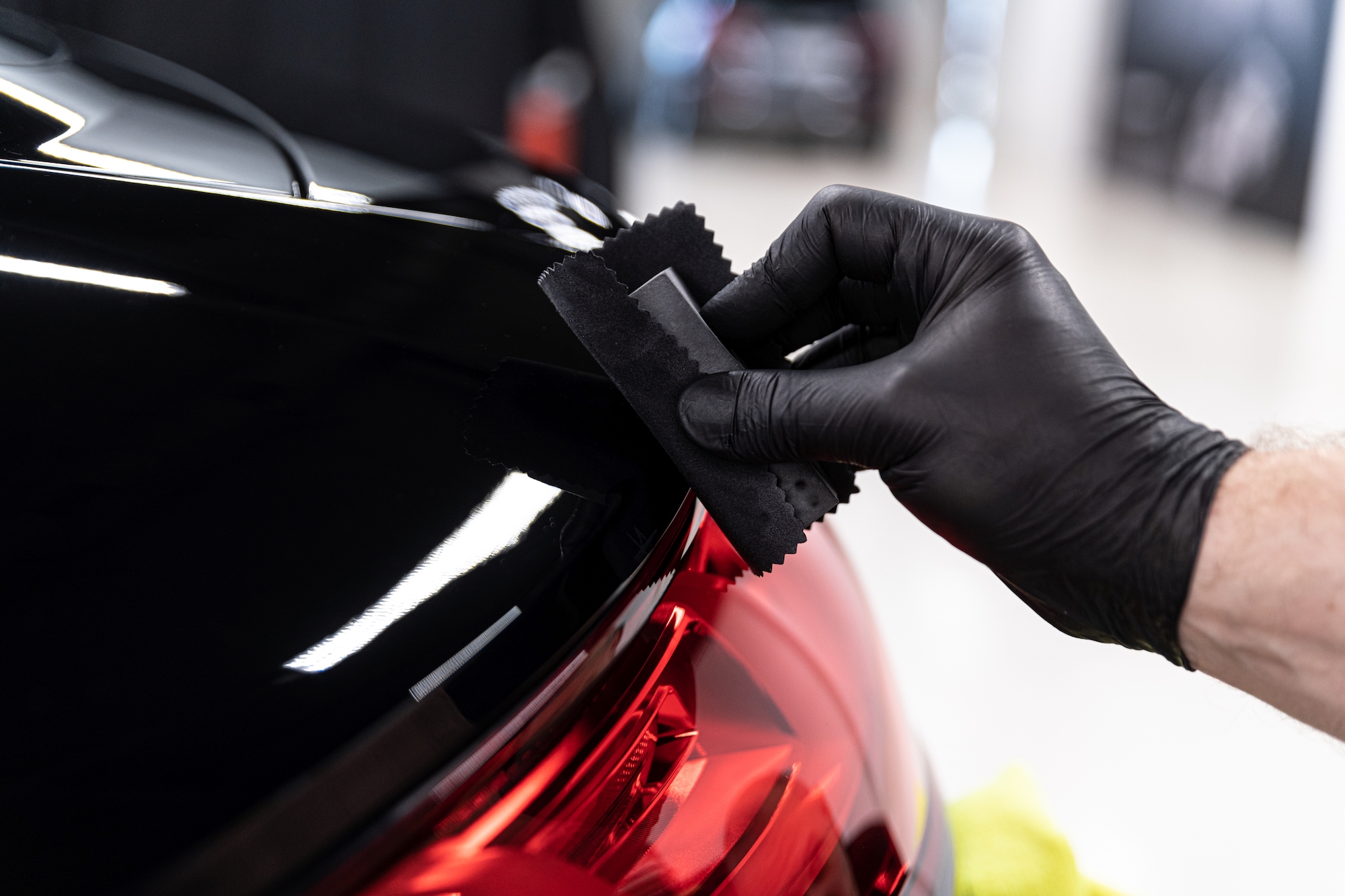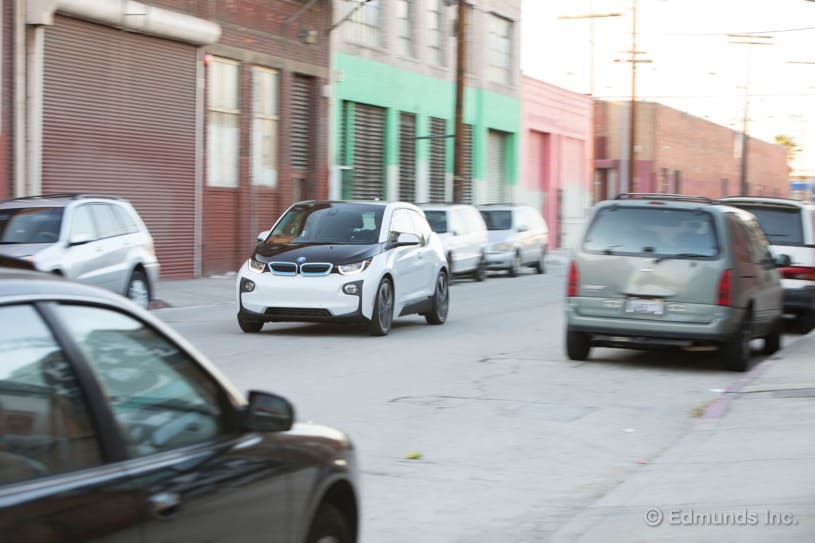Honda N-Van solo micro-camper seeks out true solitude and zen
As fun as American and European small camper vans are, no one does a proper micro-camper quite like Asia, particularly Japan and South Korea. These adorable tiny rigs often wear a Honda badge, and the latest to grab our attention, with help from bright-yellow paint, is the N-Van solo camper, a kei camper van that’s about as dead-simple and tiny as possible while still delivering mobile shelter. Look at it closely and try not to daydream of shedding everyday life like a suffocating winter coat and finding peace in an onsen deep in the Japanese Alps.
This time, Honda’s gearing up not for one of Japan’s awesome camping car shows but for the upcoming “Feeld Good” festival, a more general outdoors and recreation event where it will showcase the N-Van solo camper it prepared in conjunction with Japanese converter White House Camper. The model on show highlights how the N-Van’s flat-folding rear and front passenger seats can be used to make an impromptu camper with little more than a single-person inflatable sleeping pad. Based on the N-Van Style + Fun model, the tiny camper also includes a passenger-side awning and a folding wood camping table thrown in to better set the scene.
Along with hauling motorcycles and floor-to-ceiling crates, camping is a major focus of Honda’s N-Van advertising. The tiny van takes the concept of a multifunctional camper/work/passenger van to the next level with its low load height and flat-folding seating, requiring very little extra equipment to serve as a four-wheel micro-home. It’s powered by a tiny 52-hp 660cc engine or available 63-hp turbo.
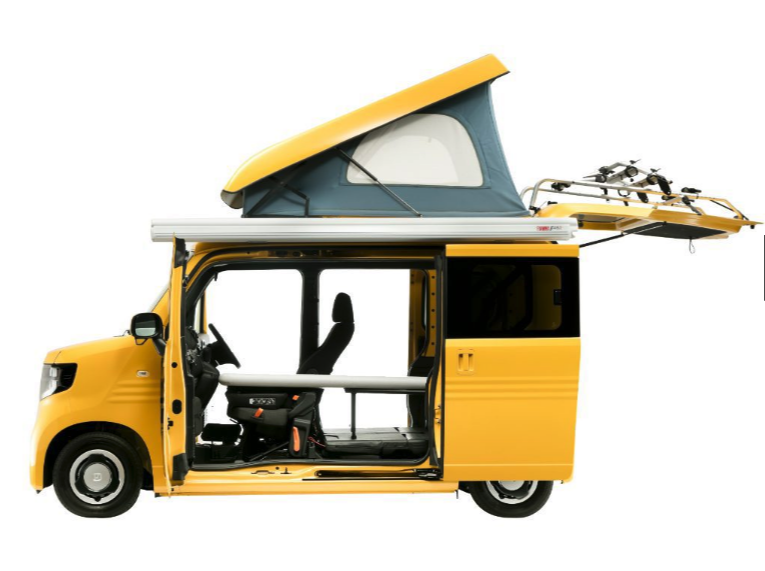
White House Camper
Those looking for a fuller micro-camper experience out of the 340-cm (134-in) N-Van will want to look directly at White House’s kei camper lineup. Honda’s show van is something of a simplified version of the shop’s N-Van Compo, which comes in both solo and multi-person varieties. Instead of merely resting an inflatable mattress on the floor-level folded seats, White House installs a solo or duo platform bed that uses the half-folded and/or swiveled front seats for support.
A lesser conversion shop would be satisfied merely creating a functional sleeper van out of a tiny N-Van kei platform, but White House goes several steps further. It takes advantage of the N-Van’s lack of passenger-side B-pillar, figuring that campers sliding out of bed can use the large passenger side opening without having to rely on the tailgate. It then pivots the camper equipment away from the sides, where it would usually be, and to the rear of the van, maintaining most of the side-to-side width of the mattress.
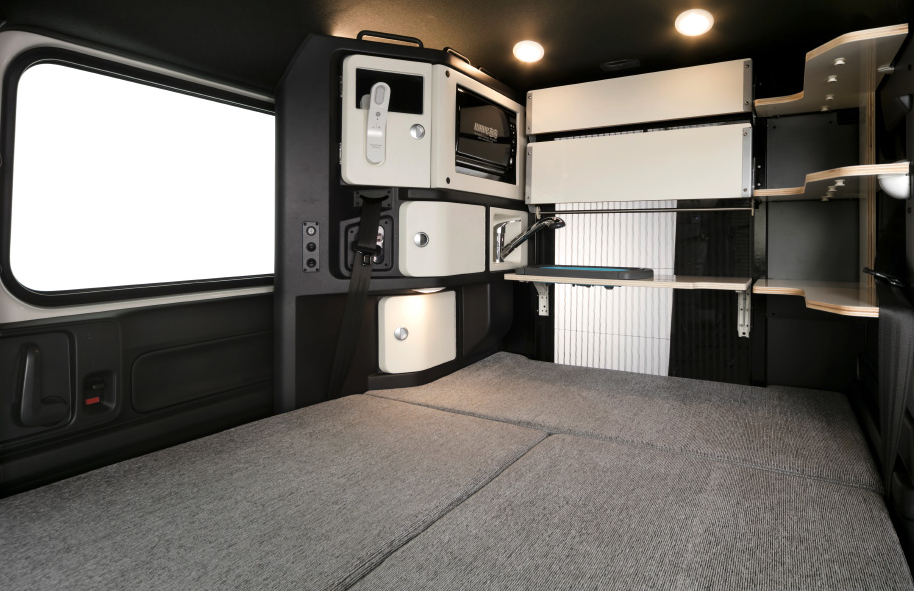
White House Camper
White House integrates components like the faucet and small storage cabinets neatly into the rear sidewalls and/or compact corner console and installs a foldable shelf with collapsible sink basin over top the foot of the bed. It looks like the shelf could also double as a small dining table, or campers could always use an outdoor camping table. White House offers variants with overhead cabinetry complete with a microwave or stacked L-shaped shelving for versatile storage.
There’s no stove in sight, but White House does offer a narrow drop-down outdoor worktop that could easily hold a small portable stove for cooking under the shelter of the tailgate. The company also offers a second collapsible sink basin with an extended faucet for placement next to the outdoor worktop. One package even includes a slim fridge box that stores below a flip-up mattress cushion for easy access.

White House Camper
Rear and side screen doors deliver interior ventilation, and those who want to expand their sheltered footprint can add the side awning seen on Honda’s show car or a complete side tent.
White House N-Van Compo base pricing ranges roughly between ¥2.23 and 2.8 million, depending upon package. Those prices might look intimidating at first, but they convert over to a very affordable US$20,125 to 25,275. White House offers vans in both fixed and pop-up sleeper roof styles.
As fascinating as kei campers are, we’re not sure many RVers in the Western world would enjoy the tiny, low-power engine or miniaturized camper interior for more than a night or two of novelty. Without bringing ebike campers into the mix, the closest to kei-camper tininess we’ve looked at from the West would probably be the German Flexcamper and British Wheelhome Vikenze II solo campers, both based on the 386-cm (152-in) Fiat Fiorino/Qubo, and the British Romahome R10 Solo, based on the Citroën Nemo, a Fiorino sibling. If it makes it to production, the camper version of the new Xbus van will draw ever closer to N-Van size, hitting the leisure market as a 364-cm (143-in) expandable electric mini-camper.
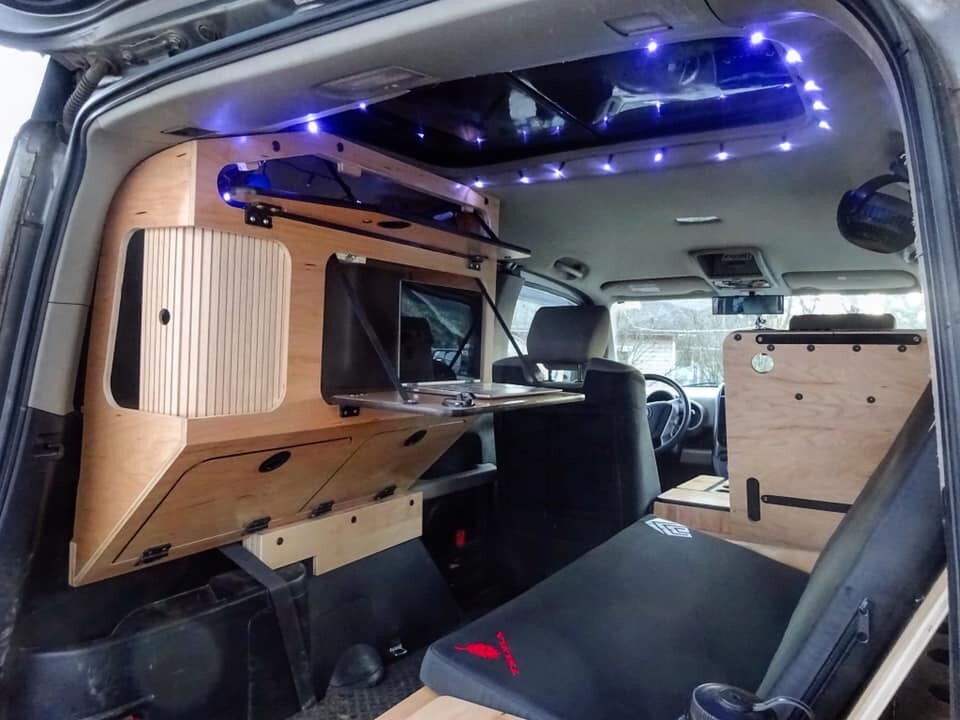
Fifth Element Camping
Over in North America, where much bigger vehicles rule and vans the size of the Fiorino are not available, the boxy, funky Element that Honda discontinued back in 2011 is about as close as you’ll get to the N-Van. At roughly 430 cm (169 in) long, it’s the only vehicle over 4 meters (13 feet) long discussed here, but it remains an absolute tiny wonder in the world of American motorhomes. North Carolina’s Fifth Element Camping continues to build a fascinating, 3D-puzzle-like modular micro-camper kit for the Honda Elements still out there roaming road and path, and California’s Ursa Minor offers the ECamper conversion with a pop-up sleeper roof similar to the one it has for the Jeep Wrangler.
After being pushed back from its original September dates, the Feeld Good festival will run on October 2 and 3.
Source: Honda and White House Camper via Motor1





